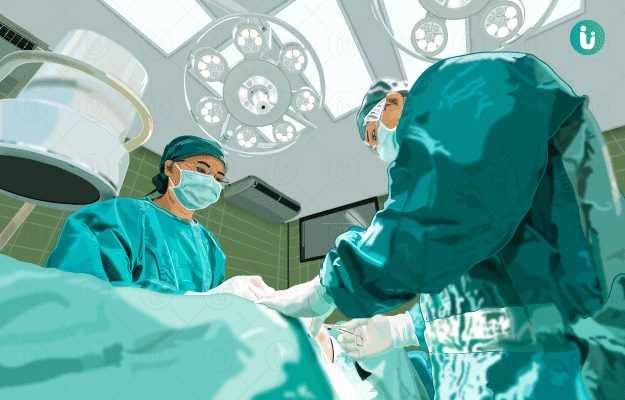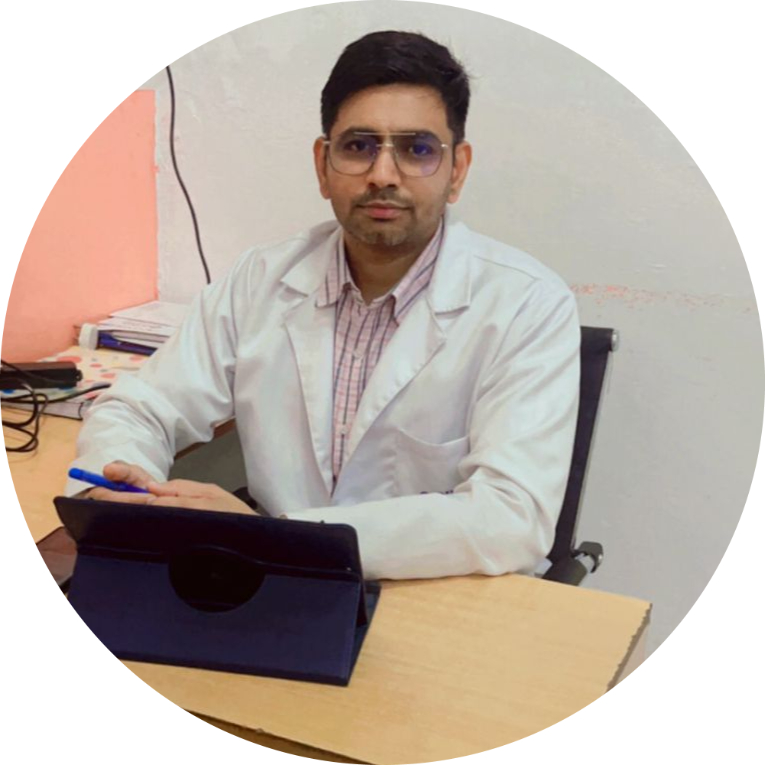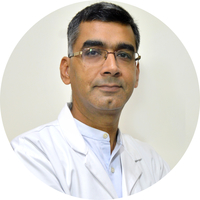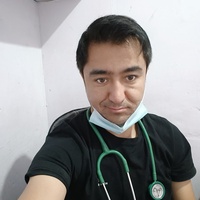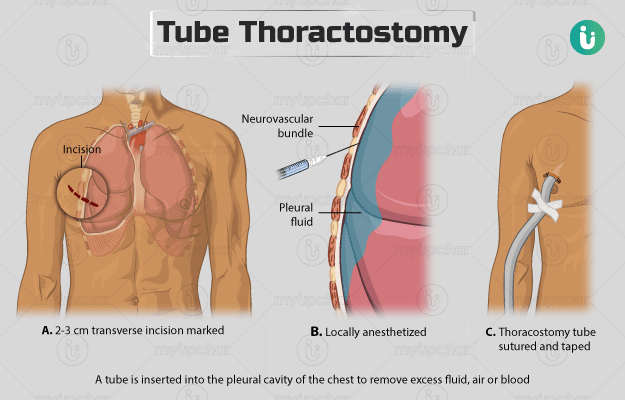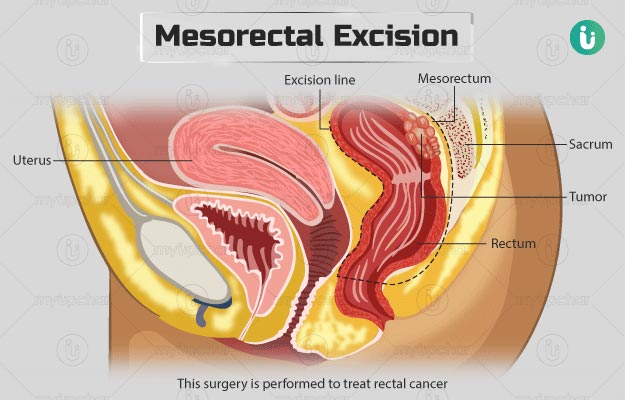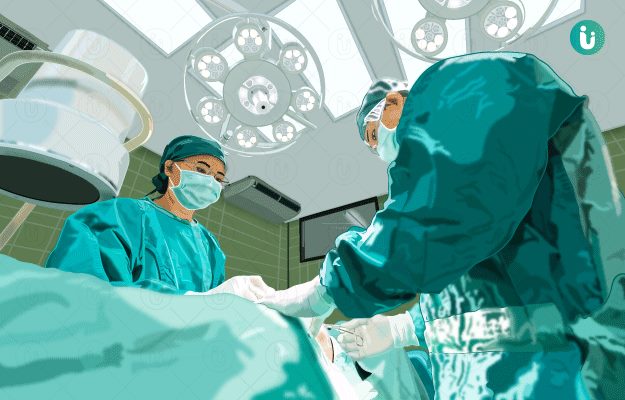After getting admitted to the hospital, you will get ready for the surgery by wearing a hospital gown. The medical staff will start an intravenous line in your arm to supply medications and/or anaesthesia. You will be given local or general anaesthesia before the surgery. General anaesthesia will be given through a tube inserted in your windpipe and will keep you asleep during the surgery. Local anaesthesia (a drug to numb the surgical area) will be given in the area of surgery along with sedative drugs to keep you relaxed but awake during the surgery. You will be lying on your back over the operating table during the procedure.
The two common approaches for the surgery are as follows:
Open or external approach: In this procedure, the surgeon may use various methods such as trephination and frontal sinus obliteration to treat the condition.
The trephination procedure will be conducted as follows:
- The surgeon will make an incision over the area of your eyebrow.
- He/she will use a drill or a chisel to access your sinus cavity and remove the excess fluid trapped inside it.
- Next, the surgeon will insert a catheter (small tube) in the area to allow the residual fluid to continue to drain after the surgery.
- Finally, the surgeon will close the skin around the catheter using sutures, and later remove the catheter when your sinus starts draining adequately.
The frontal sinus obliteration procedure will be performed in the following manner:
- The surgeon will make a cut in the front part of your head (coronal incision).
- Then, he/she will open your sinuses with the help of a chisel and saw and remove the affected tissues of your sinuses.
- The surgeon will remove the trapped/gathered mucus through your nose and use soft tissues and/or fat to fill in your sinus.
- He/she will fix a wire or plate over the bone around the sinus and close the skin over the surgical site with the help of stitches.
Endoscopic approach: This procedure involves the use of an endoscope to visualize inside your nose. In this surgery, the following steps are performed:
- The surgeon will insert an endoscope through your nose.
- He/she will place the endoscope near the diseased area and cut the extra bone or remove the swollen tissue as needed.
This procedure may take about 30-90 minutes. After the surgery, the surgeon may irrigate your sinuses with antibiotic medications through a catheter (tube) until you can pass the fluid through your nose naturally. Once this function is restored, the surgeon may remove the catheter. You may be sent home the day after your surgery.

